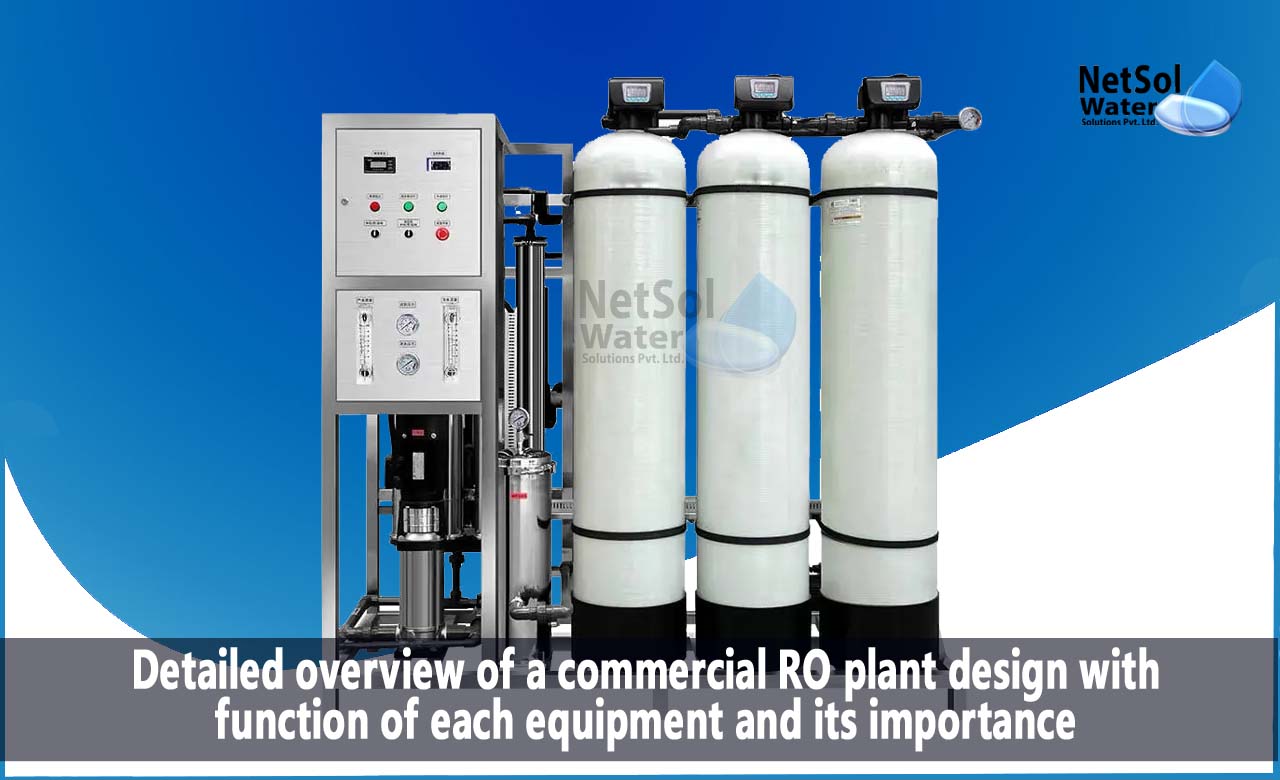Detailed overview of a commercial RO plant design with function
Commercial Reverse Osmosis (RO) plants are used in various industries to purify water for different applications. A typical commercial RO plant consists of several equipment and processes that work together to produce clean and safe drinking water.
In this blog, we will provide a detailed overview of a commercial RO plant design, including the function of each equipment and their importance.
RO Plant Design Overview
The design of a commercial RO plant can vary depending on the application and the quality of the feed water. However, a typical RO plant consists of the following equipment and processes:
- Pre-Treatment System: The pre-treatment system is the first stage in the commercial RO plant, and it's responsible for removing the suspended particles, colloids, and organic matter from the water. The pre-treatment system consists of several equipment, such as sand filters, activated carbon filters, and multimedia filters. The sand filter removes the large particles, while the activated carbon filter removes the organic matter and the chlorine from the water. The multimedia filter removes the smaller particles and provides a uniform distribution of water to the RO membrane.
- High-Pressure Pump: The high-pressure pump is responsible for providing the required pressure to the RO membrane to purify the water. The pump pressurizes the water to overcome the osmotic pressure and allow the water to pass through the RO membrane.
- Reverse Osmosis Membrane: The RO membrane is the heart of the RO plant and is responsible for removing the dissolved salts, minerals, and other impurities from the water. The RO membrane is a semi-permeable membrane that allows the water molecules to pass through while rejecting the larger molecules of impurities.
- Pressure Vessel: The pressure vessel houses the RO membrane and maintains the required pressure inside the system. The pressure vessel is designed to withstand high pressure and ensures the efficient functioning of the RO membrane.
- Post-Treatment System: The post-treatment system is the final stage in the commercial RO plant, and it's responsible for adjusting the pH and mineral content of the water to meet the required standards. The post-treatment system consists of several equipment, such as pH adjusters, UV sterilizers, and mineral dosing systems.
- Storage Tank: The storage tank is used to store the purified water after the post-treatment system. The storage tank is designed to maintain the quality of water and prevent contamination.

Process Flow Diagram: The process flow diagram of a commercial RO plant is a visual representation of the various stages involved in the RO process. Here's a detailed process flow diagram of a commercial RO plant:

The above process flow diagram provides a clear understanding of the various stages involved in the commercial RO plant and the function of each equipment.
Conclusion:
In conclusion, a commercial RO plant is a complex system that involves several equipment and processes working together to produce clean and safe drinking water. The pre-treatment system removes the suspended particles, the high-pressure pump provides the required pressure, the RO membrane removes the dissolved impurities, the pressure vessel maintains the required pressure, the post-treatment system adjusts the pH and mineral content, and the storage tank stores the purified water. The proper design and functioning of each equipment are crucial to the efficient operation of the commercial RO plant.
For any other support, inquiries, or product purchases, call on +91-9650608473 or email at enquiry@netsolwater.com



